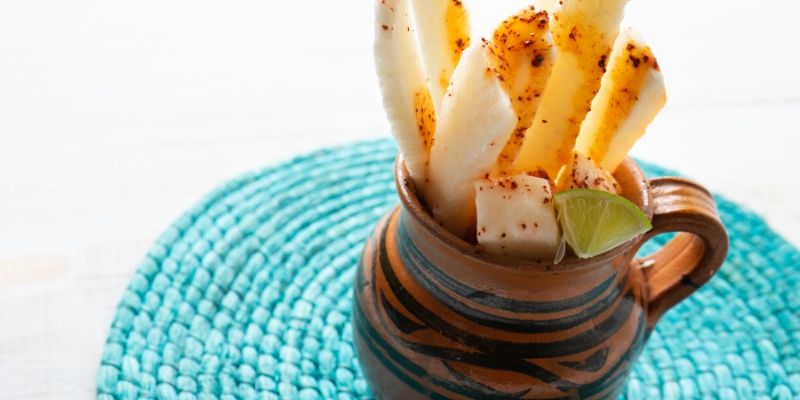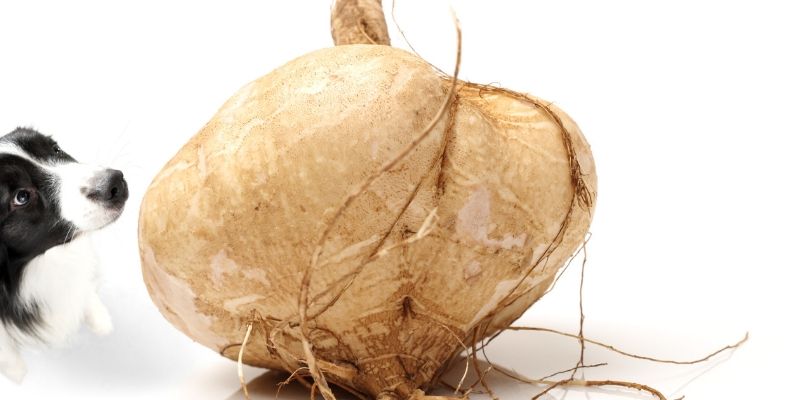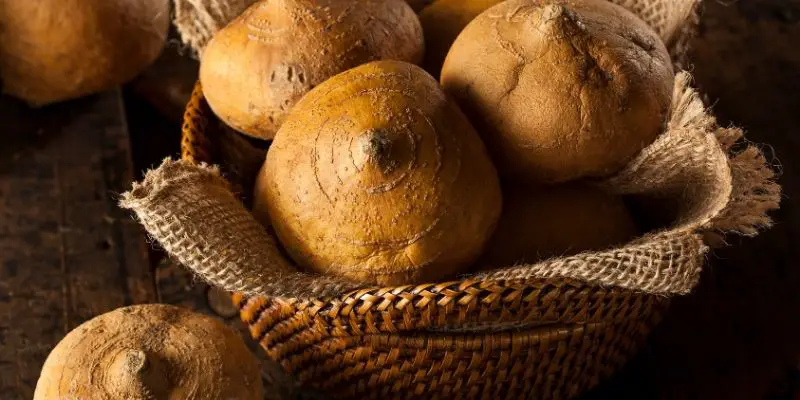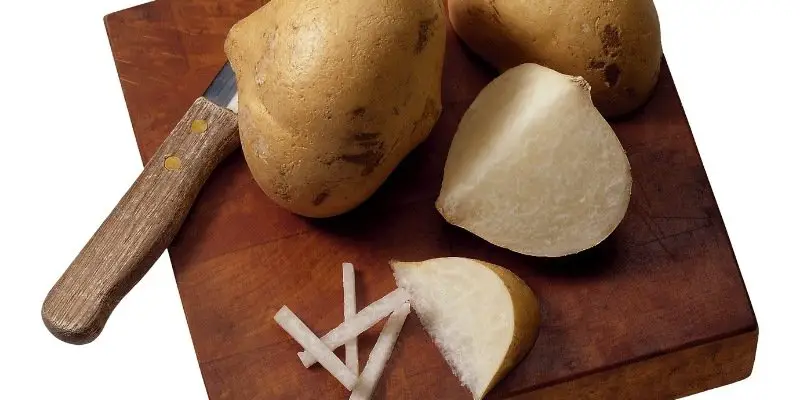Are you interested in a particular topic about dogs and jicama? Then use the table of contents below to jump to the most relevant section. And you can always go back by clicking on the black arrow in the right bottom corner of the page. Also, please note that some of the links in this article may be affiliate links. For more details, check the Disclosure section at the bottom of the page.
belongs to the bean family. Mexican yam, Mexican turnip, Mexican potato are amongst the most common names for this veggie.
One cup of raw sliced jicama has about: 40 calories. 0.1 of fat, 4mg of cholesterol (recommended daily intake is not more than 100 mg for an average-sized dog of around 30 lbs), 9 g of carbs.
It’s also a fantastic source of nutrients, boosting the immune system such as vitamin C, magnesium, potassium.

Jicama and Fiber

Jicama also is known for containing a unique soluble fiber called inulin (4.9 g per 100g of jicama).
Several trials have shown that inulin can help support a healthy gut microbiome, by acting as its fuel. Inulin may also promote bone health as studies have shown that the vegetable increases minerals’ absorption.
Does it sound like a perfect product to integrate it into the canine’s menu?

So, can dogs have jicama?
Yes, though only the flesh. It’s rich in fiber and micronutrients, making it an excellent addition to the diet of your dog. However, make sure you introduce the new food gradually and only occasionally.

Is jicama safe for dogs?

Jicama is a fantastic (and safe) addition to a pup’s healthy nutrition except for some of the jicama’s parts. Classify jicama as an apple or a pear: give the fleshy section of the vegetable to your pet.
Do not feed your dog the seeds, stem, skin or leaves of jicama.
All of these contain toxic compound rotenone. Traces of pesticides can also be found in skin, stem, and leaves. Those may be harmful to your pup.
Another warning in this section: talk with your veterinarian before introducing any new foods into the nutrition of your canine. Be aware that new foods also should be introduced slowly to avoid problems with digestion. Try to give him a small piece before feeding a large serving of jicama to your pup. Gauge his reaction.
Was the food making pup gassy? Was the taste of jicama enjoyable? Has it caused any weird side effects?
If your dog does seem to accept jicama well, it may be all right to give more of it to him. But don’t go overboard with it. Jicama should not be a substitute for pup’s regular food.

Is jicama good for dogs?
The advantages of serving jicama to your pup are: if your pup going through digestive problems, jicama can help resolve it. If it has trouble going or potty too much, Jicama’s fiber can help regulate the bodily functions of your dog.
Jicama also contains iron, potassium and vitamin C along with a healthy dose of fiber. These vitamins and minerals help maintain the immune and digestive systems of your dog.
Jicama also tastes a slightly sweet, but still low in calories. And it is appealing to many dogs.

What is the best way to serve jicama to your dog?

You can give your pet raw or cooked jicama, but because of the high fiber content, it makes more sense to cook it first. If your dog is eating raw jicama, he may have some digestive problems, if it is overeating of it. Dogs are natural carnivores with the ability to process a lot of raw meat products while struggling with raw veggies.
Just make sure that you don’t season jicama cooked for your pup, because most spices, such as salt, pepper, garlic, butter or sugar, aren’t great for dogs.
One last way to serve your pup Jicama is to blend it and mix the mash with regular foods for your dog.

Jicama for dogs. Summary
Jicama can be introduced to animal food for at least two major reasons:
- it is an excellent dietary fiber source and
- it is an inulin source which can be used for the digestion as a prebiotic.
You may serve the plant as a treat on special occasions or as a supplement to regular food for your dog. But still, don’t forget to talk to your dog’s vet to determine whether this (or any other) new food is safe enough to be introduced to his diet.
Credits: thanks for the cover photo to Canva.


